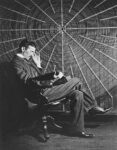Vincent van Gogh was one of the greatest artists of all time, but he just didn’t know it. Despite his struggles with mental illness, he still produced some of the greatest work that anyone has ever seen. While we all know about his famous paintings, few people know the intimate details of the man’s life. On today’s Biographics, we will delve into the passionate life of Vincent Van Gogh.
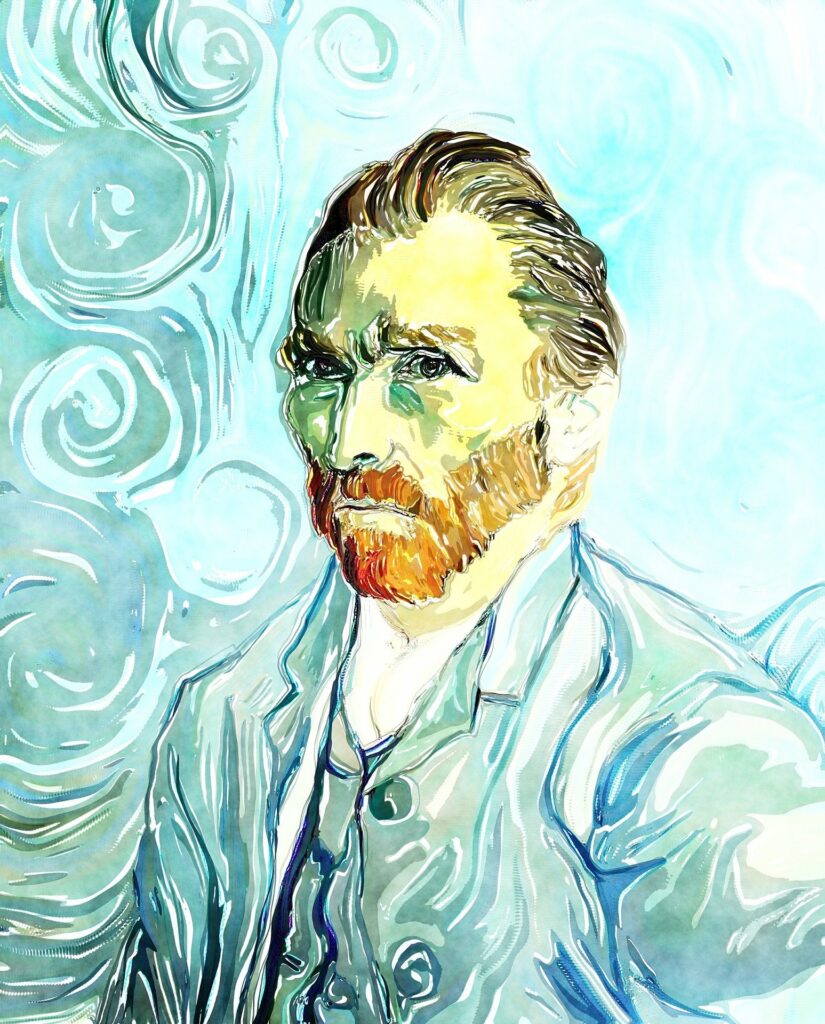
Early Life
It’s impossible to live up to the dead. But this is how Vincent Van Gogh began his life in a small village called Groot-Zundert in The Netherlands in 1853. His parents, Anna Cornelia Carbentus and Theodorus van Gogh, had a son who was stillborn, who they named Vincent Willem Van Gogh. One year later, they had a second son, and gave their new baby the same name. Growing up, Vincent would walk with his mother and see his own name engraved on this dead brother’s tombstone. His mother seemed to be traumatized by the death of her first child, and she was never afraid to tell the stories of how she lost him. In her mind, the “real” Vincent was this perfect little angel in Heaven, and no one could possibly compare to him.
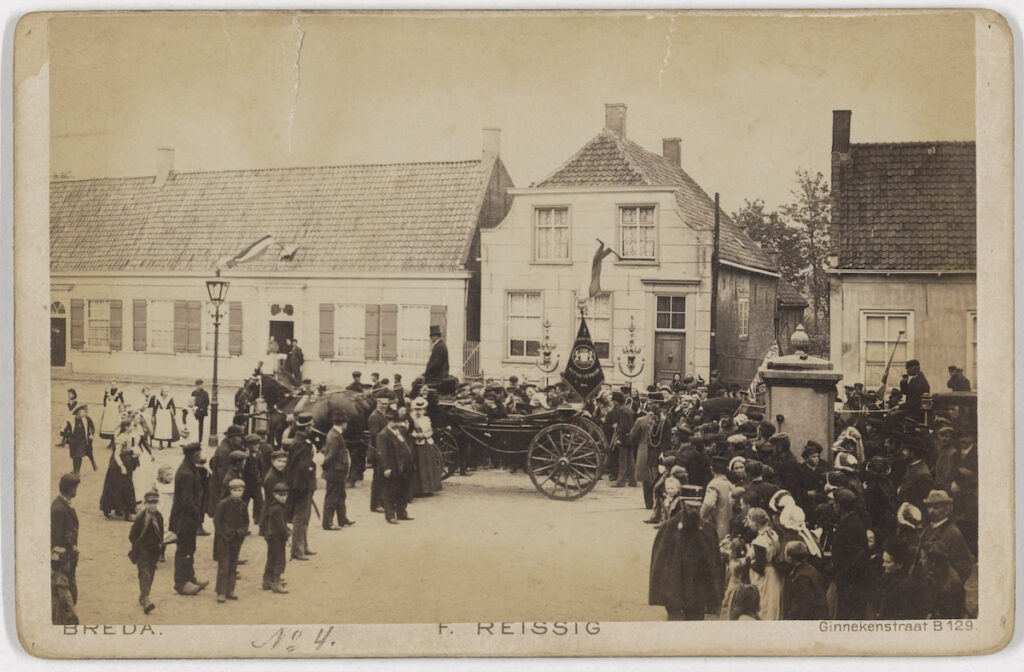
Both his father and grandfather were ministers of the Dutch Reformed Church, so it was a very strict household to be raised in. Anna and Theodorus went on to have two more boys, and three girls. Anna was most likely suffering from depression, because she was never very loving or affectionate with any of her children. She never gave them love or praise, which made Vincent try his best to be “deserving” of the love he craved. Anna was an amateur artist, so she took her children into the fields and instructed them all to draw in their sketchbooks. Vincent loved to do this, and would even carefully take bugs and plants home with him so that he could finish drawing later.
Vincent was forced to leave school at a very young age. They needed him to work as soon as possible. Luckily for him, though, his uncle was an art dealer at a firm called Goupil & Cie. This was obviously the best kind of apprenticeship that Vincent van Gogh could have ever had. He was surrounded by amazing works of art, and part of his job was visiting museums to learn about the other great masters. He taught learned to read and speak French, German, and English fluently so that he could sell art to clients all over Europe.
His brother, Theo, was also made to work for the same art dealership. After completing his apprenticeship, Vincent was transferred to one of the branches of the art dealership in London.
When he was 20 years old, he moved into a boarding house owned by a widow name Sarah-Ursula Loyer. Her daughter, Eugenie, was 19 years old. Vincent wrote to his family that he was very happy in the Loyer house. He wrote that he loved the hustle and bustle of London, and he did the gardening and other chores to help the ladies around the house.
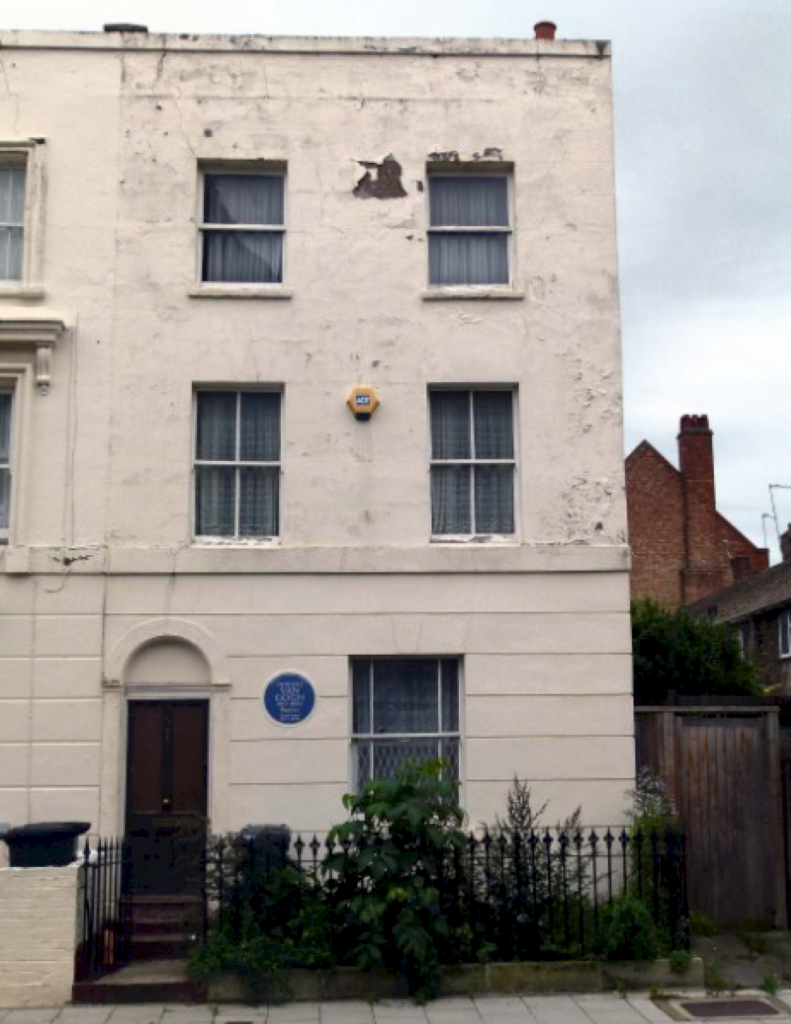
Now, this is where the story gets tricky. Historians tell this story in different ways, depending on the evidence they find. Some believe Vincent fell in love with the daughter, Eugenie, since they were only a year apart. Others believe that he was actually in love with the mother, which would be far more scandalous. This has intrigued people for years, and there was even a play written about it called Vincent in Brixton, where they theorize that he fell in love with both of them.
Either way, he proposed marriage to one of them, only to learn that they were engaged to another man. Vincent was shocked, and tried to convince her to marry him instead. He began to argue, asking what was wrong with him. Their argument was so intense, he was kicked out of the boarding house, and told to never come back.
A Religious Calling
From age 20 to 23, Vincent started to read the Bible every single day, and he put himself at a high standard of piety. Customers visiting the Goupil & Cie gallery were told not to buy the artwork. Obviously, this is the exact opposite of what Vincent should have been doing at his job. So, he was fired. He decided to follow in his father’s footsteps and become a minister, and he found a job teaching at a Methodist school for boys.
He applied to the School of Theology in Amsterdam. The school required everyone to pass Latin exams. If he did not study enough, he would punish himself by skipping meals or sleeping outside. Considering that he was already fluent in several Latin-based languages, Vincent should have been able to pass the test quite easily. Van Gogh strongly disagreed with this policy of forcing people to study a dead language. He tried to argue his case with the admissions board, and refused to take the exam out of solidarity.

Vincent Van Gogh did not care so much about which church he belonged to. He just wanted to preach the Bible to the poor. So he went to the Evangelical Church of Belgium, and he was denied, as well. In 1878, he approached the church and volunteered to go to the coal mining towns in Brussels, Belgium. Most ordained ministers did not want to go there, because it was one of the poorest and dirtiest communities in the country. But these are the people that Van Gogh wanted to help.
While he lived there, he began to sketch the peasants while they were at work in the coal mines.
The church had given him a comfortable house to live in. But there was a local woman who was very sick, and could no longer work. She could not afford to pay her rent, and had become homeless. Vincent van Gogh took pity on her, and gave the woman his house. He decided to go live in one of the coal mining shacks, instead. There was no furniture in the shack, and he was forced to sleep on the bare wooden floor with a blanket. The locals called him “The Christ of the Coal Mines.” Even though the common people loved him, the church committee was humiliated. They did not want someone who was living in squalor to represent their religion. So they decided to fire him.
Learning to Paint
Without any real job skills to speak of, Vincent decided that the one thing he truly loved to do was paint. Instead of preaching about God and the passion he felt for the world, he painted his emotions, instead. Now 27 years old, Vincent wrote a letter to his younger brother Theo explaining that he wanted to become an artist.
Theo was still working at the art dealership. He knew that Vincent was truly talented, and he encouraged him to pursue his dream. He even offered to financially support his endeavors to become an artist. They had an agreement that Theo would send Vincent 50 Francs a month for his basic living expenses. Vincent would then send a certain number of paintings to Theo, who was allowed to keep any profits that he may have had made from selling his brother’s paintings in the gallery. He was incredibly grateful for the opportunity, and would forego eating meals in favor of buying more paint and canvases. Back then, no one knew the dangers of lead paint, so he would use his mouth to wet his paint brush, which would have contributed to serious health issues.
Even though he resolved to become a painter, Vincent still had to push through his depression and self-doubt. He once wrote, “If you hear a voice within you said ‘I cannot paint,’ then by all means, paint, and that voice will be silenced.”
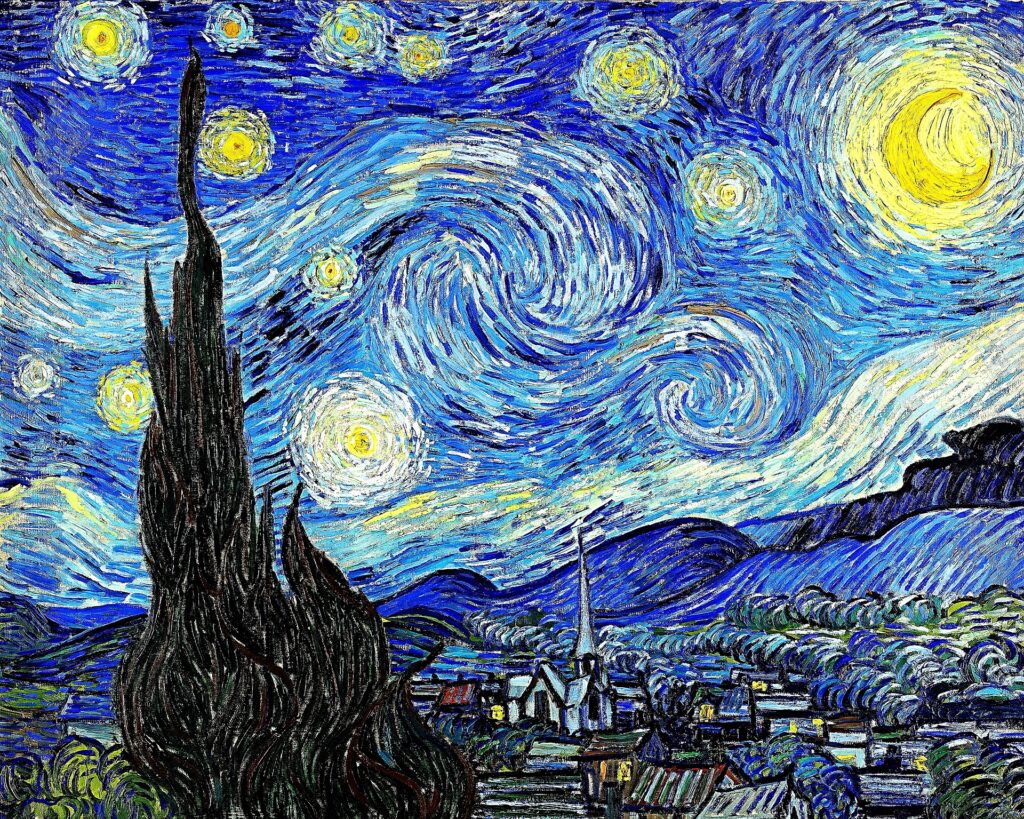
That same year, Vincent fell in love with the wrong person a second time. His older first cousin named Kee Vos-Stricker had just lost her husband, and was still mourning his death. Vincent proclaimed his love, and proposed to marry her, promising to make her happy. Not surprisingly, Kee left his home, and fled to her parent’s house in Amsterdam. But Vincent wouldn’t take “no” for an answer, and followed her there. Vincent confronted his Aunt and Uncle, begging to speak with Kee, because he thought that he could still convince her to become his wife. He claimed that he didn’t need long at all to accomplish this, and put his hand over the gas flame, saying that he promised he would stop talking when he couldn’t stand the burning of his flesh anymore. They quickly blew out the flame and they told him it was time to leave.
Vincent moved to The Hague, which was the center of the Dutch art movement at the time. At age 28, he completed his first oil painting, and sent it to Theo. While living there, he met a prostitute named Clasina Maria Hoornik, who was also called “Sien”. She was an alcoholic suffering from syphilis and a raising four-year-old daughter. Sien was also pregnant with another man’s child when she met Vincent, so she could not work as a lady of the night. Yet again, his heart went out to women who were suffering, and he fell in love with her. He wrote to his brother Theo that he enjoyed feeling like he was needed. So Theo agreed to increase his monthly stipend so that Vincent could take care of her and the children financially.
Sien began modeling for him as a subject and his drawings. In a way, this was very helpful, because he could not afford to hire models. But, Surprise surprise, he caught both syphilis and gonorrhea from her. The pain was so excruciating that he had to be hospitalized. While he was in the hospital, Sien had no loyalty to Vincent. She went back to selling herself on the streets.
Vincent van Gogh was already having issues with his mental health, but syphilis is known for causing madness. When Theo learned about this scandal, he threatened to cut off Vincent financially if he did not end his relationship. He knew that Vincent had a huge heart, and he was being taken advantage of. So he was forced to break up with her, and he left The Hague.
Life in Paris
In 1885, Vincent Van Gogh painted a piece called “The Potato Eaters” when he was 33 years old. Today it is considered one of his first masterpieces because it truly captures the emotions of these farm workers, and he had successfully captured the essence of the poor. He had hoped that his brother would be able to sell it, because it was similar to the dark paintings done by The Dutch Masters. However, it was not a popular style Paris, which is where Theo was living and selling the work.
They would send letters back and forth, with Theo sketching out examples of Claude Monet and Henri de Toulouse LauTrec, because their work was actually selling very well. Vincent van Gogh had never heard of these men before, but he was intrigued to see the work. Once he arrived in Paris, Theo brought him to the art gallery so that he could see all of the work that he had mentioned in the letters. Vincent was blown away by the beautiful Impressionist Art Movement.
Vincent immediately understood why the style was so popular, and he swapped out his dark hues for vibrant colors. Theo also introduced him to these painters that are now famous today. Hiring a model was very expensive, so he and his friends would pose for one another so that they could practice. This is why there are so many self portraits of Vincent van Gogh. He often had no one else to model for him, so he had to look into the mirror. His postman, Joseph Roulin, often agreed to sit down and have his portrait painted, too, getting into long discussions with Van Gogh.

Most of the Impressionists would only paint on days when the weather was beautiful. They cared a lot about finding the perfect light. They understood the market very well, so they could sell their paintings and making enough to live on for months at a time. They would party and wait for inspiration to strike. Vincent van Gogh was the polar opposite. He had a very strong work ethic, and he was willing to paint every single day in order to get better at his craft. This caused him to get into a lot of debates, because he believed that none of the other artists shared the same level of passion that he did.
He once wrote, “I feel such a creative force in me: I am convinced that there will be a time when I will make something good every day, on a regular basis….I am doing my very best to make every effort because I am longing so much to make beautiful things. But beautiful things mean painstaking work, disappointment, and perseverance.”
Theo often hard to apologize on behalf of Vincent’s outbursts. The only artist in the group who actually felt inspired by Vincent’s determination was Paul Gauguin. He encouraged Vincent to loosen up, and encouraged him to start drinking a green liquor called absinthe. If you’re unaware, absinthe causes hallucinations, and it would have only contributed to more problems in Vincent’s mental health.
Always determined to improve his style, he began studying Japanese art. It was almost as if he could see the soul behind the painter, so he felt determined to read books on Buddhist philosophy. He wished that he could move there, and told the other Impressionists about it. Toulouse-LauTrec told him that the French countryside had a very similar look to the Japan, and encouraged him to move there, instead. So he traveled to a town called Arles. It truly was beautiful, and it motivated Vincent to paint even more than ever before.
Life in Arles
Once he arrived in Arles, Vincent found a yellow house with very cheap rent of just 15 frances a month. He spent most days painting in isolation, survived on a diet consisting mostly of cheap bread and coffee. At night, he would drink absinthe. They were points when he had absolutely no food, so he started to drink the turpentine paint thinner and eat paint. This began to do some serious damage to his nervous system, and his mental state was in rapid decline.
Theo was worried about him, and paid Paul Gauguin a stipend to live and work with Vincent in Arles. When he found out that Paul was coming, Vincent filled up the house with sunflowers so that it was bright and cheerful for his best friend. He had been alone for so long, he stopped painting under the influence of the other Impressionist artists in Paris. Now the work was completely original, it was the best that it ever had been.
At first, Paul and Vincent were getting along just fine as roommates. But since Vincent’s mental state was disintegrating, he would initiate arguments with him, and things became very uncomfortable. Theo wrote a letter to let Gauguin that a few of his paintings had been sold in Paris, and sent him several hundred francs.
During one particularly bad fight, Paul Gaugin left the yellow house with his luggage, announcing that he was taking the train back to Paris. As he was walking down the street of Arles, Gaugin heard footsteps running behind him. When he turned around, he saw Vincent Van Gogh holding an open razor blade. The two friends froze, and stared at each other like deer caught in the headlights. In that moment, Vincent snapped out of it, and realized the insanity of what he was doing. He turned around and ran away. Paul Gauguin hurried towards the train station, and never spoke to Vincent again.
A few hours later, Vincent showed up to the local brothel. The side of his face was bleeding. He handed one of the prostitutes an object, asking her to take good care of it. When the woman looked down into her open palm, she saw that he had handed her his own ear.
The Asylum
The police showed up at Vincent’s house the next day, and they took him to the hospital so that he could be treated for the open wound where his ear used to be. When his younger brother Theo arrived, Vincent was laying in bed, and he began having seizures. He was physically weak and completely delusional. Theo wrote a letter to their mother and sisters explaining that Vincent was very sick, and he might die. He wrote that he completely blamed himself for not coming to visit Vincent sooner to check on his well-being.

After spending two weeks in the hospital, Vincent was released. He returned to his small yellow house, and felt very much alone. Theo had waited until after Vincent’s recovery to tell him the news that he was engaged. Her name was Johanna Bonger. She was an accomplished piano player who gave public performances, and she worked at the British Museum Library. Theo and Johanna both shared a passion for the arts, and they were very happy together. Instead of being happy about the news, Vincent saw it as a sign that he would soon lose Theo’s support, and there would come a day when he no longer had time to spend with him.
Gossip spreads like wildfire in a small town. So the citizens of Arles were whispering about the ear incident. They believed that Vincent Van Gogh was a threat to himself and others. So they signed a petition saying that they wanted him to be locked in a cell in the hospital. He wrote a letter to his brother Theo asking if he could be transferred to the St. Remy asylum, which would be far more comfortable than a cell. He also sent him two large crates full of his paintings, saying in a letter to Theo that he knew his life was a painter was probably never going to happen, and he hoped that he could become employed as a hospital orderly in the asylum, or any other job he could possibly find.
But Theo never gave up on Vincent’s talent. He knew that the only thing that made his brother happy was painting. So he paid for two comfortable rooms side-by-side. One was used as his art studio, and the other to be used as his living quarters. The St. Remy convent and hospital had beautiful gardens, which is where Vincent where would go to spend most of his time painting. He stayed sober, and was fed three meals a day. His physical health was finally beginning to improve.
Finally, after years of going unrecognized Vincent van Gogh received a letter from Theo saying that his paintings were going on display at an art show in Paris. One of the paintings called The Red Vineyards sold for 400 francs. This was the first time that anyone had ever paid money for one of his paintings, and it put a small dent back into reimbursing Theo for the money he had invested for so many years.
Vincent had been afraid that marriage would come between his relationship with Theo, but it was actually the opposite. Johanna understood and supported Vincent’s art career, as well. After Theo and Johanna got married and had their first son, Vincent came to visit. He had a gift for the baby- a painting called The Blossoming Almond Tree, which represented spring, and new life. As he helped his tiny nephew in his arms for the first time, they told him that the baby’s name was “Vincent Willem Van Gogh”. Overwhelmed by the honor, Vincent started crying tears of joy, and there truly was hope that things would get better.
Eternity
With all of Vincent’s new hope and optimism about life, Theo believed that his brother’s health may have been improving. So he helped him leave the asylum and find a place to live in the town of Auvers-sur-Oise. He chose an apartment living above a doctor named Paul Gachet, who was an amateur painter, and a huge supporter of the Impressionist movement. Theo hoped that by living with Dr. Gachet, he could live an independent life, but still be close to medical care whenever he needed. Dr. Gachet knew that Vincent had gonorrhea and syphilis, but he didn’t know about his history of mental issues. For a while, things seems to be fine. Vincent had dinner and pleasant conversations with Gachet’s family, and painted the portraits of his new friends and neighbors.
On July 27, 1890, Vincent received a letter from Theo where he said that he was struggling selling paintings that month. He was simply venting, and never said that he would stop helping Vincent financially. Theo even included the usual 50 francs. But even the mention of financial difficulties sent Vincent into a downward spiral of self-hatred. He felt that he was a burden on the ones he loved most, and that they would be better off without him.
Vincent found a loaded pistol, and walked out into the middle of the field before shooting himself in the chest. Bleeding and in shock, Vincent realized that he was still alive. He had barely missed his heart. He slowly stumbled back to the house, where Dr. Gachet began to operate immediately. The doctor sent a message for Theo to come on the next train.
When he arrived, Theo found his brother sitting up in bed. Vincent was covered in bandages and smoking his pipe. Theo crawled into bed next to his brother, and they stayed up all night talking about the happy memories from their childhood. As they were falling asleep, Vincent said, “This is just like when we were home. Please take me home.” Theo agreed to take him back to their little Dutch village as soon as he recovered. But it would never happen. Vincent died in his sleep, at 37 years old. They covered his coffin in bright yellow sunflowers.
Just six months later, Theo died as well, because he had secretly been suffering from syphilis, too. The brothers were buried side by side. Theo’s widow, Johanna was left with almost nothing, except their young son, and the huge collection of Vincent van Gogh‘s paintings. As she went through his crate of those so-called rejects, she found The Starry Night, which he had painted while looking out the window of the mental asylum.
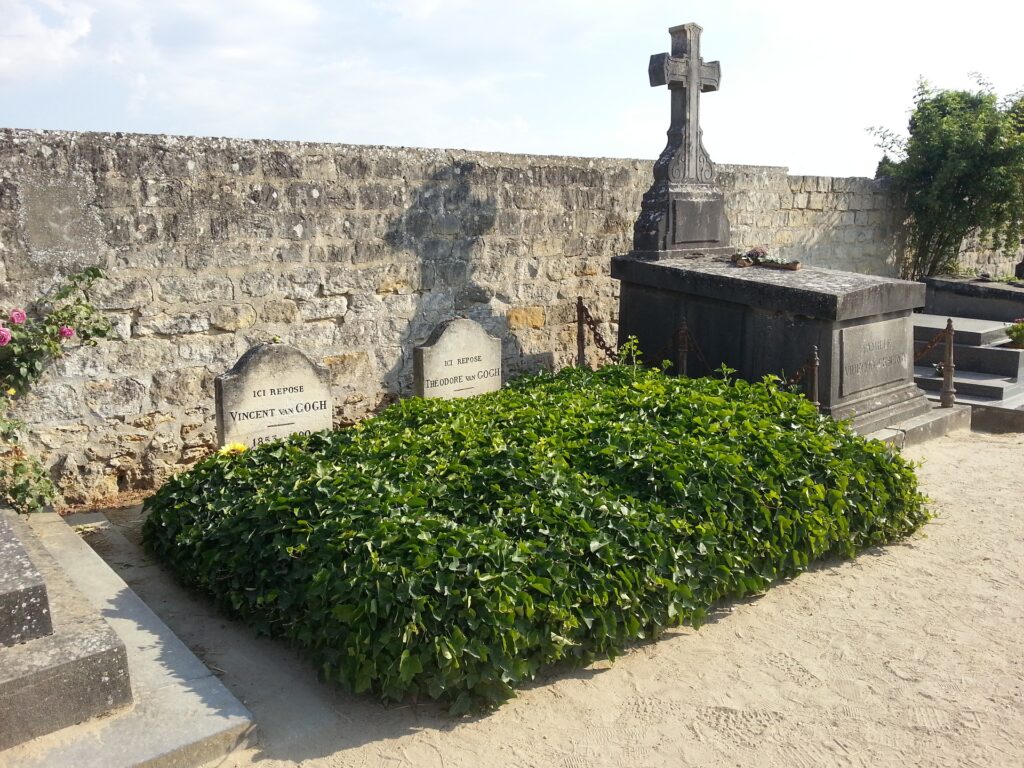
Vincent attached a letter explaining the painting; “Looking at the stars always makes me dream, as simply as I dream over the black dots representing towns and villages on a map…Just as we take a train to get to Tarascon or Rouen, we take death to reach a star. We cannot get to a star while we are alive any more than we can take the train when we are dead…To die quietly of old age would be to go there on foot.”
Johanna carefully catalogued Vincent’s work. She also collected his letters, which is why we have so much information about the kind of person he was. Johanna began to go across the continent to all the places were Vincent had lived, trying to find any of his paintings so that she could keep track of them. Many people had written Vincent off as a madman, so they had either destroyed the paintings, or gave them away. Johanna was able to catalogue over 2,100 sketches and pieces of art– 860 of which were oil paintings. And that does not including all of the ones that were lost or destroyed.
Vincent van Gogh’s mother, Anna, was still rejecting him even after his death. She burned an entire crate of her son’s work. But she lived long enough to witness just how wrong she was, and the entire world began to realize that he was truly a genius. With Johanna’s help, the paintings finally began to sell, and his lifetime of prolific work supported his family for the rest of their lives. Today, Van Gogh’s work is truly worth a fortune, and the Portrait of Dr. Gachet sold for $82.5 million. Even to this day, his paintings still fetch tens of millions of dollars. He is considered to be one of the greatest painters of all time.
Despite all of his struggles, Vincent Van Gogh spent his life with passion, and was devoted to the things he loved. And, even after attempting suicide, he still found a reason to live. “It is good to love many things. For therein lies the true strength. And whosoever loves much performs much, and can accomplish much. And what is done in love is well done.”
Sources:
https://www.vincentvangogh.org/
https://www.youtube.com/watch?v=MHu7-NPF55I
https://www.brainyquote.com/authors/vincent_van_gogh
https://www.sothebys.com/en/artists/vincent-van-gogh



